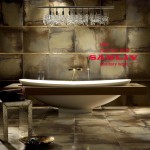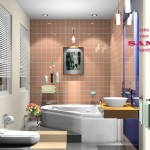How to Install Under Cabinet Lighting in Your Kitchen, Add undercabinet lighting to existing kitchen cabinets. You can install under cabinet lighting in your kitchen by plugging in fixtures or hardwiring them. Installing under kitchen cabinet lighting will greatly enhance your counter’s work surfaces. Under cabinet light fixtures can be plugged into an existing electrical outlet or you can hardwire fixtures in place. Plug-in fixtures are easy to install, but their cords can be distracting. A hardwire system’s wires are hidden, but they require major electrical work to install.
Installing Plug-in Fixtures
To install plug-in fixtures, determine where you would like each fixture placed. If you are installing a couple of fixtures under one cabinet, make sure they are evenly spaced. Also be sure to install your fixtures as close to the back of the cabinet as possible. This will prevent glare on your work surface, but you will still have adequate lighting.
Next, tape the fixtures in place, plug them in and turn them on. Check to see that your work surfaces are well lit and that the lighting looks even. Once you are satisfied with the light fixtures placement, mark where the fixtures will screw into the cabinet. Then, check that the screws are the right length for your cabinets. Next, drill pilot holes slightly smaller than the diameter of the screws. Finally, screw the light fixtures into place.
Once the fixtures are attached to the cabinets, plug them in. You can leave the electrical cord or you can hide them behind a cord cover painted to match the surrounding wall color.
Hardwiring Under Cabinet Fixtures
1. Planning the power supply. – In order to hardwire the electrical fixtures, you will need to bring new wires from the switch box to the spots were the fixtures will be located. Be sure that your current circuit can handle the additional load of electricity. Consider hiring a professional electrician if you are nervous about installing additional wiring.
However, if you choose to do this step on our own, plan on spending a couple of days wiring and then patching up afterwards. Begin by turning off the electrical circuit to the kitchen. Plug in a small appliance, such as a hand mixer, and turn it on to double-check that the electricity is off.
Next, determine where you want the switch. It is easiest to convert an already existing electrical outlet. Then, mark where the wires will need to come out of the wall for the electrical fixtures. They can either come from underneath the cabinet or inside. Now, you will have to decide how you will thread the wires from the switches to come out under the cabinets. If you have a back splash, remove this and the drywall with a fine-tooth saw. Otherwise, you will need to remove a portion of the wall and patch it when you are finished.
2. Start by enlarging the switch box. – To enlarge a current switch box, buy a two-gang remodeler’s switch box. This type of box does not need to screw into a stud, so it makes installation easier.
Next, remove the wall plate and receptacle from the electrical box. Now, using the new switch box, outline the new hole for the box. Half of it will cover the old hole and the other half should extend on the opposite side of the stud. Finally, using a drywall saw, gently cut out the hole.
Once the hole is cut, you will need to remove the old electrical box. Pull it out and remove the wires connected to it.
3. Drill holes for the light fixtures’ wires. – Next, temporarily place the light fixtures with tape under the cabinets and check to be sure that they are evenly spaced. Then, locate the prescored hole in the back of the fixture where the wire will thread through. Straight back from this hole, mark the wall where the wire will need to come out of. Next, drill a 1/2 inch hole at this mark. If you need to thread the wire through any studs, you will need to drill a 1/2 hole for the wire to go through.
4. Pull the wire through the wall. – Cut 12/2 nonmetallic electrical cable long enough to thread from the light fixture to the switch with an additional 32 inches. Begin by threading the wire from under the cabinet, through the studs and ending at the switch box with 16 inches of cable at each end.
5. Connect the wires to the fixtures. – Begin by punching out the prescored hole where the wire will thread through. Next, insert a cable connector in the hole to protect the wires and keep them secure. Then, remove 8 inches of the outer plastic sheathing from the 12/2 nonmetallic electrical cable, thread it through the cable connector until the plastic sheathing is in the connector and secure it by tightening the connector screws.
Next, connect the wires from the wall to the fixture according to the manufacturer’s directions. This usually involves clamping the same color wires together. Next, screw the fixtures into place and screw in the light bulbs.
6. Install the electrical box and switch. – Pull the old and new wires through the new electrical box. Next, place the electrical box into the hole and screw it into place so the flaps lock into place.
To properly wire the outlet and switch, it is best to consult with a professional electrician. Each state has their unique building codes that you will want to follow. Haphazard wiring jobs are fire hazards, so this is one thing you want to make sure you get right.
The general process is to connect the copper grounding wires from the old and new cable with a green pigtail connector and wrap it around the green grounding screw on the GFCI outlet and electrical box. GFCI outlets are required by code in a kitchen to prevent an electrical short.
Next, remove the plastic sheath from the extra 12/2 nonmetallic electrical cable and cut two 6 inch sections. You should have two white and two black wires. Attach them to the white wires from the electrical box with a wire connector. With the black wires, connect the two new wires with the existing cable, but not to the new cable running to the light fixtures. This step will make it easier to do electrical work in the future.
Connect a free end of one of the white wires to the GFCI’s silver screw that may be marked “white-wire line.” Also, connect one of the ends of the black wires to the brass screw on the GFCI outlet that may be marked “hot-wire line.”
With a wire connector, join the loose end of the black wire to the black wire on the switch for the light fixtures. With a separate wire connector, connect the yellow wire from the switch to the black wire leading to the light fixtures. Also, connect the white wire with the loose white wire using another wire connector.
Tuck the extra wires into the electrical box and screw the GFCI outlet and switch into place. Mount the wall plate into place, and then turn on the circuit for the kitchen. You can now turn the power on and admire your lights.








